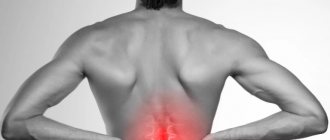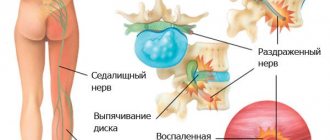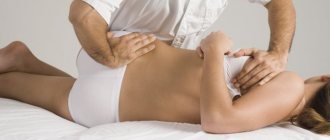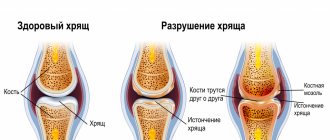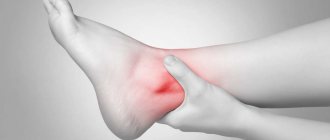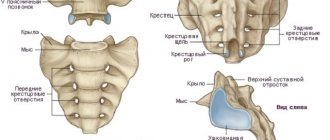Epithelial coccygeal tract is a defect in the development of soft tissues in the area of the sacrum and coccyx obtained at birth.
Pilonidal sinus is a fairly common disease that occurs in men 3 times more often than in women. Mostly, young people from 15 to 26 years old suffer from epithelial coccygeal duct. According to statistics, the coccygeal tract is least common in African Americans, more often in Arabs and Caucasian peoples, who are distinguished by increased hair growth.
According to one theory, the epithelial coccygeal duct is a skin defect that appears due to incomplete reduction of the former tail muscles.
According to another version, the coccygeal tract occurs due to improper hair growth, which grows into the subcutaneous tissue in the coccyx area.
The coccygeal passage has the shape of a narrow tube located under the gluteal fold. Inside the tube of the coccygeal passage there is an epithelium that has the properties of ordinary skin (there are hair follicles, as well as sebaceous and sweat glands).
The coccygeal passage has a primary opening, which has access to the surface of the skin. Sometimes a person can live his whole life and not notice the presence of a small dimple or hole. The coccygeal passage is also popularly called the “posterior navel.” In rare cases, an original tuft of hair grows in place of the tailbone. It is believed that human ancestors once grew a tail in this place. The embryo in the womb at 5 weeks still has a tail, which at 6 weeks decreases and disappears over time.
The coccygeal passage can open outward with one or more small holes. From time to time, waste products of the epithelium lining the coccygeal passage emerge through these openings. Infection can get into these same holes. Blockage of the ducts or infection in them, as well as injury, contribute to the retention of contents in the lumen of the coccygeal passage and lead to the development of inflammation.
Inflammation can provoke expansion of the epithelial coccygeal duct, destruction of its wall and involvement of surrounding tissue in the inflammatory process. The abscess begins to develop and reaches such a size that it opens out in the form of a purulent fistula. This is how a secondary hole appears. In almost half of the cases, hair was found inside the epithelial coccygeal duct or cyst that had grown into the side walls and formed additional ducts.
Inflammation of the coccygeal passage
In normal conditions, the coccygeal passage may not bother a person. But if bacteria enter the primary opening of the coccygeal passage, acute inflammation may begin.
Causes and risk factors for the development of inflammation of the coccygeal tract:
- lack of hygiene;
- abrasions and scratches;
- intertrigo;
- sedentary lifestyle, prolonged sitting;
- weak immunity;
- obstructive phenomena in the sweat gland duct;
- coccyx injuries.
Reasons for development
There are the following versions according to which the development of pathology occurs.
- In the first case, we are talking about disorders that arise at the stage of human embryonic development. The failure manifests itself in the appearance of thin channels that resemble enlarged pores. The channels are lined from the inside with epithelial tissue and hair; sweat and sebaceous glands emerge on their surface.
- Another reason for the development of the epithelial coccygeal duct, or pilonidal cyst, is the hormonal characteristics of the human body, which in parallel can manifest as excessive hair growth.
- There was also a correlation between the presence of the disease and the physiological characteristics of the patient’s body. In particular, we are talking about strongly pronounced buttocks and an overly deep fold between them.
Symptoms of the epithelial coccygeal tract
Symptoms of the disease depend on many reasons - age, the presence or absence of inflammatory changes, etc. This is determined by the following indicators:
- pathological discharge from the fistula tract (ichor, pus);
- pain in the coccyx area (it becomes difficult for a person to sit);
- infiltration of surrounding tissues;
- increase in body temperature.
1
X-ray examination of the sacrum and coccyx
2 Device for sigmoidoscopy
3 Device for sigmoidoscopy
Symptoms of a coccyx cyst
A small round formation appears in the gluteal fold, 5-10 cm above the anus. Its size gradually increases, and the patient experiences discomfort. Experienced proctologists at the Yusupov Hospital diagnose a coccyx cyst during the examination process, focusing on patient complaints. To confirm the diagnosis, a number of modern instrumental studies are prescribed.
Most often, a coccyx cyst manifests itself in patients with the following symptoms:
- discomfort appears in the gluteal fold, which intensifies with movement;
- swelling occurs in the sacral area, in some cases it is more widespread, involving the perineum;
- the skin in the area above the coccyx becomes hyperemic;
- the embryonic passage opens;
- purulent discharge appears (with a purulent cyst of the coccyx);
- body temperature rises;
- pain occurs when sitting;
- Around the first move, the opening of other, secondary ones may be observed.
Diagnosis of the coccygeal tract
Diagnosis of the disease does not present any particular difficulties and includes examination of the sacrococcygeal region and probing of the fistula tract. However, the presence of a number of pathological conditions masquerading as this disease (cysts, rectal fistulas, osteomyelitis, tuberculosis) requires additional instrumental diagnostic methods, such as:
- ultrasound examination of soft tissues of the sacrococcygeal region;
- fistulography;
- sigmoidoscopy;
- X-ray examination of the sacrum and coccyx;
Diagnosis of coccyx cyst
To carry out diagnostic measures for identifying a coccyx cyst, the Yusupov Hospital has all the necessary modern equipment that allows you to detect pathology in the shortest possible time and with maximum accuracy.
The main methods for diagnosing coccyx cysts include the following instrumental studies:
- sigmoidoscopy - for detailed visualization of the intestinal mucosa and determination of the localization of the pathological formation;
- probing the cyst - allows you to identify the canal of the coccygeal passage, the place where it enters the intestine;
- Ultrasound examination – allows you to clarify the localization and extent of the pathological process;
- radiography of the sacral area with the introduction of contrast;
- computer or magnetic resonance imaging.
Treatment of the coccygeal tract
Treatment of the coccygeal tract is only surgical and depends on the degree and severity of inflammatory changes in the area of the coccygeal tract. In any case, the method of surgical treatment of the coccygeal tract is always determined by the doctor individually for each patient.
Thus, in the chronic course of the disease, excision of the coccygeal tract is used using local or spinal anesthesia. This type of intervention is radical. In cases where the patient has an acute inflammatory process, for example, abscess formation, preference should be given to two-stage surgical treatment. The operation of removing the coccygeal duct is carried out in 2 stages: the first stage is opening the abscess, the second is excision of the coccygeal duct. The source of inflammation is cleaned of pus and hair, then the wound is loosely closed, leaving room for drainage of purulent discharge. The operation to remove the coccygeal passage can be performed on an outpatient basis. During the rehabilitation period, the patient will require observation by the attending proctologist and daily dressings.
1 Operation to remove the coccygeal passage
2 Operation to remove the coccygeal passage
3 Operation to remove the coccygeal passage
Causes of pain in the tailbone and methods for its elimination
Sometimes pain in the coccygeal region occurs during walking or sitting. Any of the pathologies associated with the coccyx is called anococcygeal pain syndrome. What should a person do if he has a similar symptom?
Acute pain
Acute pain can be divided by doctors into anorectal and coccygodynic pain. The first type of pain only radiates to the coccygeal region, occurring either in the anus or in the rectum area. The cause of such pain may well be: inflammatory diseases, disorders of the gastrointestinal tract, problems with scars after operations, etc.
Coccygodynic pain occurs directly in the coccyx. They are usually provoked by injuries, functional changes in joints, salt deposits or neuralgic manifestations.
Chronic pain
Chronic pain is aching in nature. Over time, they intensify, reaching a peak point. This makes movement difficult. Such pain occurs due to displacements, fractures, bruises or pinched nerves.
It is possible that such pain can occur when the functions of the urinary tract and intestines malfunction.
Inflamed coccygeal region
An inflamed coccygeal area can be the result of an injury to one of the vertebral sections, overexertion, deterioration of the metabolic process, hypothermia or infectious damage to the skeletal system.
If the inflammatory process is associated with a secondary disease, treatment of the underlying disease is necessary, as well as local treatment of the coccygeal region. To treat inflammation, it is necessary to use painkillers, depending on the degree of pain. It is possible to use non-steroidal drugs to help relieve swelling and drugs to reduce muscle tension.
If the skin is intact, physiotherapy and massage will not be superfluous for the treatment of an inflamed tailbone.
Treatment of fistulas on the coccyx
Fistula occurs more often in men than in women. It's hard to notice right away. The pathology manifests itself as pain, purulent discharge near the anus, anal itching and increased moisture levels in the skin in the buttock area.
Even the smallest injury can cause the formation of an abscess, the removal of which can result in the formation of 2-3 fistulas at the same time. In a resting position, they do not make themselves felt, but with a slight shake, the outer area of the passage is blocked, and, as a result, the space is filled with pus and a breakthrough occurs.
Getting rid of fistulas on the coccyx is possible only by surgical methods (excision of the fistula).
Coccyx cancer and its symptoms
When a person develops cancer of the sacral region, all the unpleasant pain is concentrated in the coccyx area. In medicine, primary type coccygeal tissue damage is practically never encountered. No clear reasons for the appearance of tumors on this part of the body have been identified.
It is likely that they are affected by radiation, bad habits, poor quality nutrition, and harmful production factors.
Coccyx cancer is extremely aggressive with rapid progression. Metastases quickly spread to nearby tissues. In the early stages, coccyx cancer is potentially problematic to detect; it is asymptomatic. Cancer is treated using two methods: in the early stages, endoscopy, in later stages, removal of the tumor site.
Medical care for pain in the tailbone
If your tailbone is sore, then you definitely need to check the health of your spine. First you need to undergo a series of diagnostic tests:
- take an x-ray of the entire spine, while observing the correct preparation for the study;
- MRI or CT;
- intestinal examination;
- Ultrasound examination of the pelvis and urinary system.
If you experience pain in a sitting position or when standing up, you need to consult a proctologist.
Author: K.M.N., Academician of the Russian Academy of Medical Sciences M.A. Bobyr
Recommendations after surgery to remove the coccygeal passage
After surgery, antibiotics and painkillers may be prescribed. After removing the bandage, it is recommended to take baths with antiseptic agents (furatsilin solution, chamomile infusion). Sitting and lifting weights are prohibited for a month after the intervention. After removing the sutures, a daily shower with thorough rinsing of the intergluteal fold is recommended. Within six months after surgery, depilation should be carried out in the surgical area at 2-week intervals.
At MedicCity, proctology is one of the priority areas. Our clinic is rightfully proud of its highly professional specialists and European-level diagnostic and treatment equipment. We possess all the most modern methods of treating proctological diseases such as hemorrhoids, anal fissure and many others.
Causes of inflammation in the coccyx area
Inflammation in the coccyx area can occur as a result of prolonged compression of its structures. This may be a consequence of choosing the wrong chair for sitting work. If its surface is too hard or there is an incorrect distribution of the functional load from the body weight on the sit bones and tailbone, then there is a high probability of microscopic cracks appearing on the bone surface. This will provoke the deposition of calcium salts. Cornerstone osteophytes will cause pain when sitting and standing. The soft tissues surrounding the coccyx will be injured by osteophytes and become inflamed.
Other potential causes of tailbone inflammation are:
- osteochondrosis of the lumbosacral spine and its possible complications (protrusion and herniation of intervertebral discs);
- deforming osteoarthritis of the iliosacral joint;
- divergence of the pelvic bones (for example, during pregnancy or with excess pressure in the abdominal cavity);
- deforming osteoarthritis of the hip joints and shortening of one of the limbs;
- poor posture in the form of curvature of the spinal column and redistribution of shock-absorbing load;
- curvature of the lower extremities according to the valgus or varus type with a change in the angle of the position of the femoral heads in the cavity of the acetabulum;
- destruction of the knee joints, including gonarthrosis, cicatricial degeneration of the cruciate ligaments, thinning of the medial and lateral menisci, etc.;
- incorrect foot placement (clubfoot and flatfoot);
- ankle and foot deformity;
- traumatic effects on the lower back and gluteal region (fracture and crack of the coccyx, sprain of the ligamentous and tendon apparatus, fall on the buttocks, jump from a height, consequences of an accident, etc.);
- consequences of surgical intervention on the spine (surgery for disc herniation, spinal canal stenosis, etc.);
- pregnancy and divergence of the pelvic bones, violation of the position of the tailbone as a result of polyhydramnios or crowded conditions, refusal to wear a prenatal bandage;
- pinched sciatic or coccygeal nerve, piriformis or cauda equina syndrome.
In addition to diseases of the musculoskeletal system, inflammation in the coccyx area can be caused by gynecological and proctological problems, prolapse of internal organs and stagnation of venous blood in the pelvic cavity.
Risk factors for the development of an inflammatory process in the area of the coccygeal bone are:
- excess body weight (internal visceral obesity with accumulation of fat in the abdominal cavity is especially dangerous);
- maintaining a sedentary lifestyle without regularly exerting physical activity on the muscular frame of the back and abdominal muscles;
- sedentary work with an improperly organized workplace;
- impaired microcirculation of blood and lymphatic fluid, tendency to thrombosis;
- diabetic angiopathy and neuropathy;
- taking certain potent medications;
- frequent lower back injuries.
What to do if your tailbone is inflamed: how to relieve it and how to treat it?
The first thing to do if your tailbone is inflamed is to seek medical help. Remember that idiopathic pain in this area is rare. Such cases include no more than 1%. All other cases of treatment are always consequences of serious pathologies that require immediate treatment.
Before you relieve inflammation of the coccyx, it is necessary to establish and eliminate the cause of its occurrence. If this is not done, then it will be impossible to get rid of the pain. Over time, the disease will become chronic and will give regular exacerbations after the negative impact of certain factors.
If you want to know how to treat inflammation of the tailbone, then consult a doctor. He will make an accurate diagnosis and prescribe a course of therapy. You cannot use antibiotics, non-steroidal anti-inflammatory drugs and other medications on your own. You will only “erase” the clinical picture and make it difficult for the doctor to make an accurate diagnosis.

